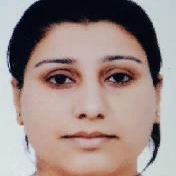International Journal of Image, Graphics and Signal Processing (IJIGSP)
IJIGSP Vol. 10, No. 5, 8 May 2018
Cover page and Table of Contents: PDF (size: 1159KB)
Comparative Analysis of Univariate Forecasting Techniques for Industrial Natural Gas Consumption
Full Text (PDF, 1159KB), PP.33-44
Views: 0 Downloads: 0
Author(s)
Index Terms
Forecasting, Natural gas, Simple Exponential Smoothing, Holt method, ETS method, ARIMA, Neural Network (NN)
Abstract
This paper seeks to evaluate the appropriateness of various univariate forecasting techniques for providing accurate and statistically significant forecasts for manufacturing industries using natural gas. The term "univariate time series" refers to a time series that consists of single observation recorded sequentially over an equal time interval. A forecasting technique to predict natural gas requirement is an important aspect of an organization that uses natural gas in form of input fuel as it will help to predict future consumption of organization.We report the results from the seven most competitive techniques. Special consideration is given to the ability of these techniques to provide forecasts which outperforms the Naive method. Naïve method, Drift method, Simple Exponential Smoothing (SES), Holt method, ETS(Error, trend, seasonal) method, ARIMA, and Neural Network (NN) have been studied and compared.Forecasting accuracy measures used for performance checking are MSE, RMSE, and MAPE. Comparison of forecasting performance shows that ARIMA model gives a better performance.
Cite This Paper
Iram Naim, Tripti Mahara," Comparative Analysis of Univariate Forecasting Techniques for Industrial Natural Gas Consumption ", International Journal of Image, Graphics and Signal Processing(IJIGSP), Vol.10, No.5, pp. 33-44, 2018. DOI: 10.5815/ijigsp.2018.05.04
Reference
[1]Robinson, Planning and forecasting techniques. London: Weidenfeld& Nicolson, 1972.
[2]"EIA - International Energy Outlook 2017", Eia.gov, 2018. [Online].Available:http://www.eia.gov/forecasts/ieo/nat_gas.cfm. [Accessed: 05- Aug- 2017].
[3]Wheeler, Fossil fuels. Edina, Minn.: Abdo Pub., 2008.
[4]G. C. Leung"Natural Gas as a Clean Fuel." Handbook of Clean Energy Systems.
[5]"India Natural Gas Market Size by Type 2019- TechSci Research", Techsciresearch.com, 2017. [Online]. Available: http://www.techsciresearch.com/report/india-natural-gas-market-forecast-and-opportunities- 2019/497.html. [Accessed: 10- Aug- 2017].
[6]B. Abraham and J. Ledolter, Statistical Methods for Forecasting. New York, NY: John Wiley & Sons, 2009..
[7]R. Hyndman, Forecasting with exponential smoothing. Berlin: Springer, 2008.
[8]P. S. Kalekar, Time series forecasting using holt-winters exponential smoothing. In :Kanwal Rekhi School of Information Technology, pp. 1-13, 2004.
[9]R. Snyder, A. Koehler, R. Hyndman and J. Ord, "Exponential smoothing models: Means and variances for lead-time demand", European Journal of Operational Research, vol. 158, no. 2, pp. 444-455, 2004.
[10]R. Snyder, A. Koehler, and J. Ord, "Forecasting for inventory control with exponential smoothing", International Journal of Forecasting, vol. 18, no. 1, pp. 5-18, 2002.
[11]C. Chatfield and M. Yar, "Holt-Winters Forecasting: Some Practical Issues", The Statistician, vol. 37, no. 2, p. 129, 1988.
[12]H. Grubb and A. Mason, "Long lead-time forecasting of UK air passengers by Holt–Winters methods with damped trend", International Journal of Forecasting, vol. 17, no. 1, pp. 71-82, 2001.
[13]A. Koehler, R. Snyder, and J. Ord, "Forecasting models and prediction intervals for the multiplicative Holt–Winters method", International Journal of Forecasting, vol. 17, no. 2, pp. 269-286, 2001.
[14]F. GÜmrah, D. Katircioglu, Y. Aykan, "Modeling of Gas Demand Using Degree-Day Concept: Case Study for Ankara", Energy Sources, vol. 23, no. 2, pp. 101-114, 2001.
[15]F. GORUCU, "Evaluation and Forecasting of Gas Consumption by Statistical Analysis", Energy Sources, vol. 26, no. 3, pp. 267-276, 2004.
[16]H. ARAS and N. ARAS, "Forecasting Residential Natural Gas Demand", Energy Sources, vol. 26, no. 5, pp. 463-472, 2004.
[17]M. Akpinar, and N. Yumusak, Forecasting household natural gas consumption with ARIMA model: A case study of removing cycle. In: 7th IEEE International Conference on Application of Information and Communication Technologies (AICT), pp. 1-6, 2013.
[18]C. Villacorta Cardoso and G. Lima Cruz, "Forecasting Natural Gas Consumption using ARIMA Models and Artificial Neural Networks", IEEE Latin America Transactions, vol. 14, no. 5, pp. 2233-2238, 2016.
[19]L. Liu and M. Lin, "Forecasting residential consumption of natural gas using monthly and quarterly time series", International Journal of Forecasting, vol. 7, no. 1, pp. 3-16, 1991.
[20]M. Akkurt, O. F. Demirel, and S. Zaim, Forecasting Turkey’s natural gas consumption by using time series methods. European Journal of Economic and Political Studies, Vol. 3, no. 2, pp. 1-21, 2010.
[21]F. Faisal, Time series ARIMA forecasting of natural gas consumption in Bangladesh’s power sector ,Elixir Prod. Mgmt, 2012.
[22]C. H. Wei, and Y. C. Yang, A study on transit containers forecast in Kaohsiung port: applying artificial neural networks to evaluating input variables. Journal of the Chinese Institute Transportation, vol. 11, no. 3, pp. 1-20, 1999.
[23]W. Lam, P. Ng, W. Seabrooke and E. Hui, "Forecasts and Reliability Analysis of Port Cargo Throughput in Hong Kong", Journal of Urban Planning and Development, vol. 130, no. 3, pp. 133-144, 2004.
[24]G. Zhang and D. Kline, "Quarterly Time-Series Forecasting With Neural Networks", IEEE Transactions on Neural Networks, vol. 18, no. 6, pp. 1800-1814, 2007.
[25]M. Fung, "Forecasting Hong Kong's container throughput: an error-correction model", Journal of Forecasting, vol. 21, no. 1, pp. 69-80, 2001.
[26]E. Hui, W. Seabrooke and G. Wong, "Forecasting Cargo Throughput for the Port of Hong Kong: Error Correction Model Approach", Journal of Urban Planning and Development, vol. 130, no. 4, pp. 195-203, 2004.
[27]R. Kizilaslan, and B. Karlik, Combination of neural networks forecasters for monthly natural gas consumption prediction. Neural network world, vol. 19, no. 2, 2009.
[28]M. Akpinar, M. F. Adak, and N. Yumusak, Forecasting natural gas consumption with hybrid neural networks—Artificial bee colony. In: 2nd IEEE International Conference on Intelligent Energy and Power Systems (IEPS), pp. 1-6, 2016.
[29]S. Makridakis, S. C. Wheelwright, and R. J. Hyndman, (1998). Forecasting methods and applications. John Wiley& Sons. Inc, New York, 1998.
[30]R. Hyndman and G. Athanasopoulos, Forecasting. [Heathmont]: OTexts, 2016 E. Hannan, Multiple Time Series. Hoboken: John Wiley & Sons, Inc., 2009.
[31]S. MAKRIDAKIS and M. HIBON, "ARMA Models and the Box-Jenkins Methodology", Journal of Forecasting, vol. 16, no. 3, pp. 147-163, 1997.
[32]C. Grillenzoni, "ARIMA Processes with ARIMA Parameters", Journal of Business & Economic Statistics, vol. 11, no. 2, p. 235, 1993.
[33]Freeman and D. Skapura, Neural networks. Reading, Mass: Addison-Wesley Publishing Company, 1991.
[34]S. Haykin, Neural Networks. Prentice Hall Upper Saddle River, 1999.
[35]B. White and F. Rosenblatt, "Principles of Neurodynamics: Perceptrons and the Theory of Brain Mechanisms", The American Journal of Psychology, vol. 76, no. 4, p. 705, 1963.
[36]Robjhyndman.com, 2018. [Online]. Available: http://robjhyndman.com/talks/RevolutionR/2-Toolbox.pdf. [Accessed: 15- Jan- 2017].
[37]"Understanding the construction and interpretation of forecast evaluation statistics using computer-based tutorial exercises The Economics Network", Economicsnetwork.ac.uk, 2018. [Online]. Available: https://www.economicsnetwork.ac.uk/showcase/cook_forecast. [Accessed: 14- Apr- 2017].
[38]K. Aho, D. Derryberry and T. Peterson, "Model selection for ecologists: the worldviews of AIC and BIC", Ecology, vol. 95, no. 3, pp. 631-636, 2014.
[39]R. Hyndman and A. Koehler, "Another look at measures of forecast accuracy", International Journal of Forecasting, vol. 22, no. 4, pp. 679-688, 2006.
[40]Neelam Mishra, Hemant Kumar Soni, Sanjiv Sharma, A K Upadhyay, "Development and Analysis of Artificial Neural Network Models for Rainfall Prediction by Using Time-Series Data", International Journal of Intelligent Systems and Applications(IJISA), Vol.10, No.1, pp.16-23, 2018. DOI: 10.5815/ijisa.2018.01.03.
[41]Vikalp Ravi Jain, Manisha Gupta, Raj Mohan Singh," Analysis and Prediction of Individual Stock Prices of Financial Sector Companies in NIFTY50", International Journal of Information Engineering and Electronic Business(IJIEEB), Vol.10, No.2, pp. 33-41, 2018. DOI: 10.5815/ijieeb.2018.02.05.
[42]Er. Garima Jain, Bhawna Mallick,"A Study of Time Series Models ARIMA and ETS", International Journal of Modern Education and Computer Science(IJMECS), Vol.9, No.4, pp.57-63, 2017.DOI: 10.5815/ijmecs.2017.04.07.
[43]Mehdi Khashei, Mohammad Ali Montazeri, Mehdi Bijari,"Comparison of Four Interval ARIMA-base Time Series Methods for Exchange Rate Forecasting", International Journal of Mathematical Sciences and Computing(IJMSC), Vol.1, No.1, pp.21-34, 2015.DOI: 10.5815/ijmsc.2015.01.03.

